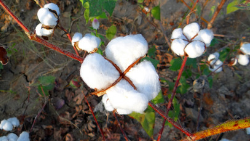More and more in the marketplace, consumers see a variety of cotton products across multiple product categories. In the last decade, we’ve seen a rise in products marketed as made with organic cotton.
Since cotton is a natural fiber, what makes organic cotton any different? Here are the facts about organic cotton that you need to know.
What Is Organic Cotton? What makes cotton organic? How is Organic Cotton grown?
Is Organic Cotton Sustainable?
Organic cotton, in some ways, is synonymous with sustainability. Farmers who grow organic cotton are looking to produce a more sustainable product with regard to the health of their fields, water supply, and the air. In organic cotton production, farmers reduce the use of pesticides and can only use natural fertilizers, no synthetic fertilizers are allowed. Furthermore, farming operations utilize all-natural seed, as opposed to any genetically engineered varieties.
To market products as organic, manufacturers must go through extensive supply chain verification by third-party entities, both government and non-government.
Organic Cotton vs Cotton (Differences between Organic Cotton and Conventional Cotton)
In contrast, conventional cotton growers have the full array of tools at their disposal, whether it’s insecticides to ward off pests or synthetic fertilizers to maximize yield per acre grown. In addition, growers of conventional cotton utilize genetically modified seed, engineered to be herbicide and insect resistant.
Organic Cotton Production
How much Organic Cotton is grown globally?
According to the 2018 Textile Exchange Organic Cotton Farm & Fiber Report, global production of organic cotton exceeded 117,000 metric tons grown on more than 472 hectares (1172acres). While these numbers may sound large to some, organic cotton production still accounts for less than one percent of overall cotton production worldwide.
How much Organic Cotton is grown in the US?
Out of the 18 countries that produce organic cotton, the United States ranks in the top third, in a marketplace driven by China, as well as smaller nations like Uganda, Benin, and Turkey. Out of 220,000 organic cotton growers worldwide, there are nearly 60 organic cotton producers in the US responsible for producing more than 20,000 bales annually. These producers call the states of Texas, New Mexico, and North Carolina home.
Value of the Organic Cotton Market
According to the 2010 Textile Exchange Global Market Report on Sustainable Textiles, global sales of organic cotton apparel and home textile products totaled more than $5 billion. That figure tripled by 2014 to $15.7 billion. As production has increased, more companies have adhered to standards of product traceability and sustainable processing, creating a fairer playing field for producers.
Organic Cotton Products in the Marketplace
Why is Organic Cotton more expensive to produce?
Organic cotton is more expensive to produce for several reasons, and it starts right from the get go. Organic cotton is grown using non-GMO seeds which typically have a higher cost along with the other materials that farmers only use for their organically grown crop. Farming practices for Organic cotton are also more labor intensive due to the restrictions on herbicides and pesticides. To this effect, organic cotton farmers typically hand hoe their cotton crop to remove and prevent weed growth during the crop production too.
Organically grown plants also produce less yield (pounds per acre) than conventionally grown cotton, so supply and demand also plays a role, as there is less organic cotton available than conventional cotton, thus driving up the price.
What kind of products are made using Organic Cotton?
Now at the end of 2018, consumers can buy organic cotton in an array of products. These products include everything from personal care items (sanitary products, make-up removal pads, cotton puffs, ear swabs), to fabrics, home furnishings (towels, bathrobes, sheets, blankets, bedding, beds), and children’s products (toys, diapers). Of course, we see organic cotton in all kinds of apparel, too.
How can a consumer tell if a product is organic?
Here in the USA, consumers should look for a seal of certification from the US Department of Agriculture (certified USDA organic). Worldwide, there are a number of global, regional, and national certifying entities. As the organic cotton market continues to experience double-digit annual growth, industry players will continue to demand traceability and sustainability standards that ensure an equal playing field for those who wish to develop products with organic cotton versus conventional varieties.
